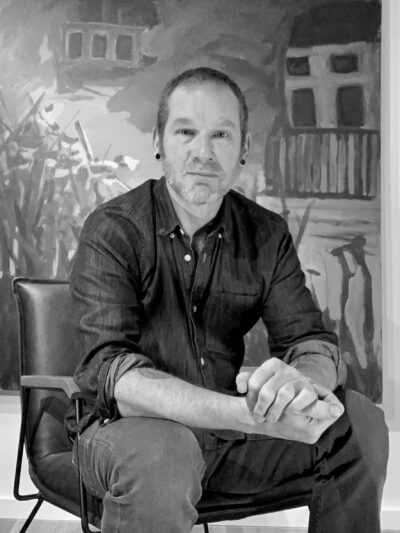1575 The Red Rock chronicles
My Indian Summer
by Joseph Kakwinokanasum
New Westminster: Tidewater Press, 2022
$22.95 / 9781990160127
Reviewed by Brett Grubisic
*
 With chapters that share titles with huge seventies radio hits by the likes of ABBA, Kenny Rogers, Nick Gilder, and Captain & Tennille, My Indian Summer appears to point readers in the direction of a wholly feel-good feast of nostalgia.
With chapters that share titles with huge seventies radio hits by the likes of ABBA, Kenny Rogers, Nick Gilder, and Captain & Tennille, My Indian Summer appears to point readers in the direction of a wholly feel-good feast of nostalgia.
While first-time novelist Joseph Kakwinokanasum certainly knows that decade’s signifiers—from feathered hair and Acapulco Gold to Saturday Night Fever outfits and a character nicknamed “Disco”—his backwards glance mixes the sweet and the astringent, the grin-inducing with the poignant and discomfiting. Sure, at moments—say, at the image of boyhood friends riding bikes, scavenging pop bottles, and gorging on candy from a corner store run by a kindhearted neighbour—readers may feel the reassuring pull of the supposedly carefree past. In Kakwinokanasum’s story, though, there’s misery in copious amounts at home and danger on the streets; and the future is anything but bright. We may wish for the possibility of a pure, summery nostalgia for Hunter, the author’s immensely likeable and dogged protagonist. In the Sooke, BC resident’s tale unadulterated bliss isn’t altogether realistic.
Following an epilogue in which fearful and infuriated single mom Margarette flees Edmonton with her three young children (“No fucking way is that animal going to take my kids,” she tells her sister), My Indian Summer opens in late August, 1979. Locals and visitors alike are gearing up for the Annual Red Rock Labour Day Weekend, in a northern BC town near Dawson Creek, “where three hundred farmers, Natives, and war vets lived in relative harmony.”

Margarette’s eldest children have since grown. Unhappy at home and in Red Rock, Deb has recently caught a southbound bus to Vancouver. She left Hunter, the youngest, with a Stephen King paperback and useful advice of the ‘save your own skin’ variety. Characterized as hotheaded, angry, and violent, elder son Noah now works as a firefighter. Whenever home, he spits on Hunter, calls him “retard” and “faggot,” and threatens another beating if Hunter does not clean a house regularly strewn with Margarette’s party debris. Kakwinokanasum introduces Margarette as generally furious; she’s also impatient, selfish, a heavy drinker, inclined toward violence, an indifferent parent, and, frequently, altogether absent.
“Apihtawikosisan,” Hunter’s mother calls her youngest, “Half-breed.” Throughout the novel, Hunter’s limited Cree vocabulary is emblematic: aside from “Apihtawikosisan,” he’s familiar with “mukwey emitsook” (“no food”) and “mukwey soniyaw” (“no money”). With a woodsman named Crow and three caring elders who run a business that Hunter frequents, Kakwinokanasum indicates how broader communal parenting supplies Hunter with alternatives to what he’s experienced and learned at home.
Early in My Indian Summer it’s possible to discern Kakwinokanasum’s literary antecedents, whether the early fiction of Eden Robinson or novels by Richard Wagamese, Katherena Vermette, or Tomson Highway. Interestingly, Kakwinokanasum makes the most architectural use of Deb’s gift to Hunter: Night Shift, a story collection King published shortly before The Body, a novella best known for being adapted into Stand By Me. If Hunter and his friends bring to mind the squabbling, adventuresome boys of Stand By Me, Kakwinokanasum portrays Red Rock, BC (some 4500 km from King’s setting of Castle Rock, Maine) distinctly, with an eye attentive to time, place, and cultural milieu.
The central plot of My Indian Summer involves Hunter and his quest to make as much money as he can over the holiday weekend. Money means security and independence; and Hunter wants as much as he can grasp — and soon.
Alongside friends Eric and Jacob, Hunter schemes and plans and hold meetings; the boys ride their bikes far and wide to collect bottles (wary that an earlier enterprise, to sell Kool-Aid, had been a fiasco).

A charming glimpse of far-off childhood, their scenes raise smiles about their innocence and hope and faith in their own ability. The fashions, radio hits, and bygone expressions might refer to actual childhoods or imaginary ones (as seen in Smoke Signals and E.T., for instance, or Stranger Things), and they draw readers in. Kakwinokanasum recognizes the needs of an engaging story, though. When the entrepreneurial boys stumble upon a duffel bag laden with tempting, illicit materials, the narrative make turns both comical and high stakes.
Soon enough, the boys are forming alliances with local adults, outfoxing opponents, evading authorities, and intently listening to educational lectures that are humorously inappropriate for pre-pubescents:
Most businesses fail in the first six months, and when you sling weed, smoking your own stock is the number-one reason for that failure. Always overweigh. Not a lot, just a tiny bit. That way any smartass with a fucking scale can’t come back to you and accuse you of ripping them off. That’s the number-two reason for business failure. If you’re buying it, always try it out, and if it’s bunk, don’t buy it. No one wants to buy shit weed. Potheads may not be able to remember much when they’re high, but they never forget getting burned on their purchase.
So lectures Pete, helpful local jack-of-all trades. Also: “Don’t smoke your profit.”
A rollicking adventure with moments of high-jinx and mayhem, the story here also fleshes out Hunter’s extended Red Rock family, a communal network that’s caring, irreverent, and humane. Apart from colonial history, there’s a delectable flesh-and-blood villain too, an unapologetic racist who once told his deceased parents “I stopped needing you a long time ago” before splashing his urine over their graves. He’s a terrific creation, in part because he’s so detestable and, ultimately, no match for Red Rock ingenuity.
In The Body King presents young protagonists on a quest partly because their home lives are miserable. Outside is preferable to home, where parents cannot be trusted or counted on.
Likewise, with Deb gone, Hunter is vulnerable and solitary. Only later does he learn of his mother’s burdens and sense the onerousness of her history. Kakwinokanasum closes his story with an attractive ambiguity: Labour Day has ended and so has the seriocomic quest. Hunter must return to home and the classroom, where the struggle is real and not so easy to resolve. Hunter has grown and learned and benefitted from the guidance of others. As for how wise he truly is and how capable he will at navigating complex obstacles, Kakwinokanasum does not reveal. Who knows, maybe the fate of this young literary hero will appear in an ensuing volume. I, for one, would be keen to find out.
*

My Two-Faced Luck, the fifth novel by Salt Spring Islander Brett Josef Grubisic, published in 2021 with Now or Never Publishing, is reviewed here by Geoffrey Morrison. A previous book, Oldness; or, the Last-Ditch Efforts of Marcus O (2018), was reviewed by Dustin Cole. Editor’s note: Brett Josef Grubisic has recently reviewed books by Chelene Knight, Lyndsie Bourgon, Gurjinder Basran, Don LePan, Paul Headrick, and Christopher Evans for The British Columbia Review.
*
The British Columbia Review
Publisher and Editor: Richard Mackie
Formerly The Ormsby Review, The British Columbia Review is an on-line journal service for BC writers and readers. The Advisory Board consists of Jean Barman, Wade Davis, Robin Fisher, Cole Harris, Hugh Johnston, Kathy Mezei, Patricia Roy, Maria Tippett, and Graeme Wynn. Provincial Government Patron (since September 2018): Creative BC. Honorary Patron: Yosef Wosk. Scholarly Patron: SFU Graduate Liberal Studies.
“Only connect.” – E.M. Forster
8 comments on “1575 The Red Rock chronicles”